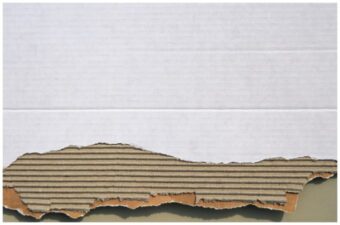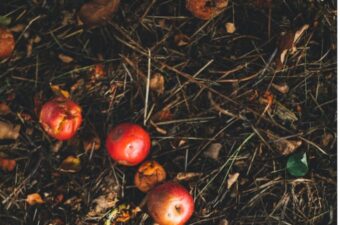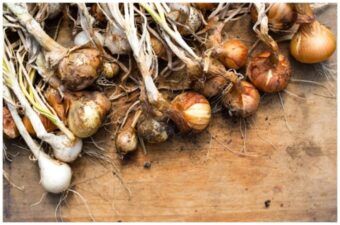How to Make Compost in An Apartment Without Worms
An average household produces more than 200 pounds (90kg) of kitchen waste in a year. Were you aware that it’s possible to turn this organic waste into black gold? Black gold here refers to the valuable soil-additive “compost”, which is a mixture of decayed organic matter.
When we say “composting”, it might bring wriggly worms to your mind. For those who are squeamish about worm composting, here’s the good news. It is possible to compost without worms!
Composting can be a year-round family fun activity that would be useful in making your indoor garden flourish, and also in sparing the environment some serious problems. Here is all you need to know about making compost in an apartment without worms.
Table of Contents
Why compost in an apartment?

All the plants that you grew using our apartment gardening guide need some enrichment from time to time. Compost has many properties to improve your soil quality, hence producing healthier plants.
If your city does not ask you to sort your trash, your kitchen waste is probably going to end up in a landfill. Once here, it would start decaying through the process of anaerobic decomposition which would release the potent greenhouse gas, methane.
What comes from the earth should return to the earth.
The Rule of Nature
By composting organic waste, you reduce your overall household waste and ensure that the nutrients in fruits and vegetables go back to the soil.
What foods can and can’t be composted indoors?
Essentially, if you are not worried about the time, the smell, and the insects, just about anything can be composted. However, as this is not the case for most of us, this list can help you to know what you should and should not compost.
| What can you put in a compost bin? | What shouldn’t you put in a compost bin? |
| Green waste (especially the leafy stuff) | Citrus (release acid that will tilt the pH balance of your compost) |
| Used Coffee grounds and tea bags if they are made from natural materials (high nitrogen) | Bread and cereals (can attract gnats) |
| Fruit and vegetable scraps | Any kind of animal parts except hair and nails. That means no dairy, no fat, and no meat. (would attract rodents and create odors) |
| Newspaper and cardboard | Too many onion peels (makes compost highly acidic) |
| Sawdust | Pet feces, however healthy your pets are (their poop contains various pests that will fester in your compost and later make their way into your plants) |
| Eggshells (adds calcium) | Sticky labels on fruits and vegetables |
The right carbon-nitrogen balance
Healthy compost should have a balanced ratio of two elements, carbon (browns) and nitrogen (greens). The ideal ratio is 30:1, which means 30 parts carbon for each part nitrogen.
If your compost pile is stinky or slimy, add carbon components (cardboard, dried leaves, sawdust, newspaper). If the pile looks too dry and slow to decompose, add nitrogen components (kitchen waste, coffee grounds, tea leaves).
To make it easier to maintain the ratio, remember that for each time you add a batch of kitchen scraps, add roughly 4 times that amount in cardboard, newspaper, etc. by volume.
Does composting smell bad?
If done properly, your compost bin will not smell bad. When the compost bins are covered, they should not smell at all and once uncovered, should have the sweet smell of raw earth. If it starts smelling sour, it is time to check the bin for any nasties.
The environment inside the bin should be slightly damp and hot. Take care to maintain the moisture content of your compost bin. If you put in excessively watery items like watermelon when the compost is already wet, it can get very soggy and smelly.
Indoor compost bins ideal for apartments and small spaces
You can either compost indoors or outdoors depending on how much space you can spare. Indoor compost bins do not heat up as much as outdoor bins. This could slow down the composting process and take things a while to break down. On the other hand, outdoor bins could attract flies and other animals.
For beginners, there are various bin options available online and in stores, that allow you to have a stress-free apartment composting without worms.
Bokashi Composter
Bokashi is a fast, space-efficient, and odorless type of composting, perfect for apartment composting. In Bokashi bin, you mix the food scraps with what is called “Bokashi bran” and leave it to ferment anaerobically for around two weeks. It then forms a Bokashi pre-compost which needs to be buried in the soil or put into another compost bin for another two weeks before it forms usable Bokashi compost.
Electronic compost bins
Electronic compost bins or food recyclers are small compost bins for those who want to get fast results. Food waste (including meat and dairy) can be added to the bin and turned into a dry, nutrient-rich soil supplement in lesser than 3 hours. It does not smell because of the presence of a unique filtration system and is perfect for indoor composting.
Compost tumblers
Compost tumblers have a mechanism for rotating which keeps the mixture well-aerated which helps the waste to break down quicker. It also saves you the pain of turning the pile over manually.
The 18.5gal (70L) volume perfectly fits any balcony or rooftop garden. Kids would love to do this activity!
DIY Plastic container compost bin
If you feel confident enough and do not want to spend so much money, you can also fashion your own Plastic container compost bin from a normal sealable plastic container. Pay extra attention to aerating the compost on time and making sure it does not get soggy.
After your compost is ready…
How do I use indoor compost that I make?
In about two months, your nutrient-rich compost should be ready for use. After this, you can use it at the base of your plants indoors or outdoors. If you compost regularly, you will not need to buy organic manure again!
See also How to Add Compost to Your Garden
Where should compost be stored in an apartment?
For short periods, you can store it in the same way as soil. If you need to store it for long, you can do so in aerated bags or containers.
What do you do with finished compost if you don’t garden?
If you don’t garden, you could give the compost to friends or family that have a garden. You can also donate it to your community garden or a local school garden. As compost is a valuable resource for those who engage in gardening, you could even sell it at the farmer’s market.
General indoor composting tips
- Toss your compost once every few days. Composting is an aerobic process and requires to be aerated often.
- If you are putting eggshells, break them into tiny pieces before putting them in or they could be in there forever.
- Teabags and coffee filters are sometimes made of plastic. Check them before you put them in.
- Although everything breaks down eventually, you could hasten the composting process by shredding everything that you put in. E.g.- Cutting hair into smaller pieces will go a long way.
- Invest in a leaf shredder if you have access to a lot of dried leaves. The shredded leaves can increase the carbon in your compost.
- Having a stash of some dried paper or shredded cardboard in hand is always a good idea. These will prevent your compost from becoming too soggy.
- It is part of the healthy composting process for your compost to develop maggots, cutworms, and other grub. However, if you have a problem with them, you can squint and imagine they are rice grains!
Don’t worry about going wrong with composting. We suggest that you start and learn by trial and error as you go. You can also consult the many resources and communities online when you feel stuck.
Once you make compost a few times and get the hang of it, we promise there will be no looking back!





